The post List of Prime Minister in India with Important Facts appeared first on Blogs.
]]>The Prime Minister of India is appointed by the President of India when a political party nominates a candidate for the post, after its win in a general election. The leader of this political party is most likely to become The Prime Minister of India. The Prime Minister along with the Union Council of Ministers serve as the chief advisor to the President. Therefore, it is The Prime Minister who heads the executive branch of the Indian Government. At the stroke of midnight hour of 15th August 1947 India got its first Prime Minister namely, Pandit Jawaharlal Nehru. After 75 years of Independence India in 2021 has its 14th serving Prime Minister Shri Narendra Modi. Here is a list of Prime Ministers in India which outlines the various important information regarding India’s Prime Ministers that are likely to come in several competitive examinations.
List of All Prime Ministers of India
During these 74 years of Independence, India has been served by 14 Prime Ministers. Few of them have served the country twice. Given below is the list of Prime Ministers in India along with their serving period.
| S.No | Prime Minister’s Name | Period |
| 1. | Pandit Jawaharlal Nehru | 15th August 1947- 27th May 1964 |
| 2. | Gulzarilal Nanda (interim) | 27th May 1964- 9th Jun 1964 |
| 3. | Lal Bahadur Shastri | 9th June 1964 -11th January 1966 |
| 4. | Gulzarilal Nanda (acting) | 11th January 1966- 24th January 1966 |
| 5. | Indira Gandhi | 24th January 1966- 24th March 1977 |
| 6. | Morarji Desai | 24th March 1977- 28th July 1979 |
| 7. | Charan Singh | 28th July 1979- 14th January 1980 |
| 8. | Indira Gandhi | 14th January 1980- 31st October 1984 |
| 9. | Rajiv Gandhi | 31st October 1984- 2nd December 1989 |
| 10. | Vishwanath Pratap Singh | 2nd December 1989- 10Th November 1990 |
| 11. | Chandra Shekhar | 10th November 1990- 21st June 1991 |
| 12. | P.V. Narsimha Rao | 21st June 1991- 16th May 1996 |
| 13. | Atal Bihari Vajpayee | 16th May 1996- 1st June 1996 |
| 14. | H.D. Deve Gowda | 1st June 1996- 21st April 1997 |
| 15. | Inder Kumar Gujral | 21st April 1997- 18th March 1998 |
| 16 | Atal Bihari Vajpayee | I8th March 1998- 22nd May 2004 |
| 17. | Dr Manmohan Singh | 22nd May 2004- 17th May 2014 |
| 18. | Narendra Modi | 26th May 2014- Incumbent |
Important Facts about India’s Prime Ministers.
Following are certain important facts about Prime Ministers of India.
1.) Narendra Modi is the current Prime Minister of India. He is the 15th Prime Minister of India (re-elected Prime Ministers excluded). He is serving his second consecutive term after being re-elected on 30th May 2019. He has also served as the Chief Minister of Gujarat for 13 years before being sworn in as India’s Prime Minister.
2.) Pandit Jawaharlal Nehru was the First Prime Minister of India. He is also the longest serving Prime Minister of India who served for 17 years.
3.) Indira Gandhi was the first and the only female Prime Minister of India.
4.) Rajiv Gandhi was the youngest Prime Minister of India. He was sworn in as the Prime Minister of India at the age of 40.
5.) India has been served by 14 Prime Ministers, 15 including Gulzarilal Nanda who served as The Acting Prime Minister of India twice.
List Of Prime Ministers of India – Origin and Contribution
The following paragraphs contain a brief information about each of the Prime Ministers of India. Following from most recent to the first.
Narendra Damodardas Modi – (2014- Incumbent)
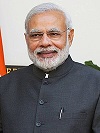
Narendra Modi is the 14th Prime Minister of India. He was sworn in for his second consecutive term as India’s Prime Minister on 30th May 2019. He was the longest serving Chief Minister of Gujarat before becoming the Prime Minister of India. He served as The Chief Minister of Gujarat for 13 years from October 2001 to May 2014.
He is accredited for his Swachh Bharat Mission (2014). A mission to sanitize the rural as well as the urban parts of India. He has also launched The Pradhan Mantri Ujjwala Yojana (2016) which provides free cooking gas to the poor. Under the same Yojana, electricity was introduced in 18,000 Indian villages. In 2017 his government introduced the famous Goods and Services Tax also known as ‘One Nation One Tax’. The Pradhan Mantri Jan Dhan Yojana and Ayushman Bharat are other initiatives taken by his government for the betterment of India.
Dr Manmohan Singh (2004-2014)
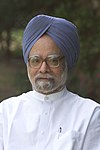
Dr Manmohan Singh served as Prime Minister of India for two consecutive terms and was the head of the UPA (United Progressive Alliance) Government. He was the 13th Prime Minister of India. He is currently a sitting member of the Rajya Sabha from Rajasthan and serving his sixth tenure. He is also the recipient of the prestigious Padma Vibhushan award (1987).
His ministry rolled out some key projects and legislations such as National Rural Health Mission, Right to Education Act (RTE) in 2009. He also passed the crucial Right to Information Act (RTI) and National Rural Employment Programme (NREGA) in 2005. He is widely given credit for the LPG (Liberalisation, Privatisation, Globalisation) reforms that were brought into effect in the year 1991 under P.V Narsimha Rao’s Government where he served as the Finance Minister.
Atal Bihari Vajpayee – (1996, 1998-1999, 1999-2004)
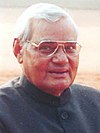
Atal Bihari Vajpayee has served three terms as India’s Prime Minister. The first being for 13 days only when he was elected as the 10th Prime Minister of India in 1996. He then served for a period of months from 1998 to 1999. This was followed by a full term from 1999 to 1994.
He was a member of the Parliament for over five decades, elected as a Member of Lok Sabha for 10 times and Member of Rajya Sabha twice. He was among the founding members of Bhartiya Jan Sangh (BJS) which later developed into a party known as Bharatiya Janata Party (BJP) of which he was the first President. He is known for his slogan ‘Jai Jawan Jai Kisan’. The Pokhran-II 1998 nuclear tests were carried out under his tenure. He worked to restore peace between India and Pakistan after the Kargil War (1999), with the historic Lahore Summit in February 1999. He was presented with the highest civilian award Bharat Ratna in 2014. 25th December (his birthday) is celebrated as Governance Day.
Inder Kumar Gujral (1997-1998)

Inder Kumar Gujral served as India’s 12th Prime Minister. In 1996 while serving as the Minister of External Affairs under the leadership of Deve Gowda he introduced the Gujral Doctrine. A set of five principles which guides the foreign relation with India’s Immediate neighbours. His term lasted less than a year.
H.D. Deve Gowda (1996-1997)
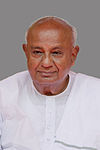
H.D. Deve Gowda was sworn in as the 11th Prime Minister of India in 1996. He was unexpectedly chosen to become India’s Prime Minister when his party The United Front supported The Congress and won the elections. His term lasted less than a year.
P.V Narsimha Rao (1991-1996)
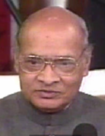
Often referred to as the “Father of Indian Economic Reforms”, he is considered to be one of the most effective Prime Ministers of India. He shifted the industrialising mixed economic model of India to a market driven one. Establishing diplomatic relations with Israel, rekindling India’s Nuclear Programme and driving India through the 1991 economic crisis are few of his major achievements. He was the first Prime Minister who belonged to the southern part of India. He had served as the Chief Minister of Andhra Pradesh as well.
Chandra Shekhar (1990-1991)
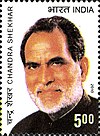
Chandra Shekhar was the 8th Prime Minister of India. He was the head of a minority government with external support from the Indian National Congress. His government was viewed as the ‘lame duck’ or the ‘puppet’ government because of the presence of very few MPs. The Economic Crisis of 1991 and the assassination Of Rajiv Gandhi are two of the major events that took place under his tenure.
Vishwanath Pratap Singh (1989-1990)
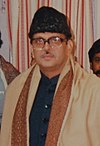
Vishwanath Pratap Singh also known as V.P Singh was sworn in as the 7th Prime Minister of India. He is known for the implementation of The Mandal Commission report for India’s backward caste. The 62nd Amendment of the Constitution of India was created by his government. The Schedule Caste and Schedule Tribe (1989) was also enacted by his government.
Rajiv Gandhi (1984-1989)
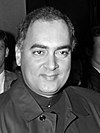
Rajiv Gandhi was sworn in as the 6th Prime Minister of India right after the assassination of his mother Indira Gandhi in 1984. He took office when he was just 40 years old. Before becoming the Prime Minister of India, he was a pilot in Indian Airlines. Under his tenure he faced the greatest crisis such as The Bhopal Gas Tragedy 1984, The Case of Shah Bano Begum. He along with other politicians of the Indian National Congress were allegedly involved in the Bofors Scandal as well which marred his corruption less image. He was assassinated by a member of LTTE (Liberation Tigers of Tamil Eelam) because of his open conflict with them.
Charan Singh (1979-1980)
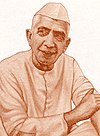
Charan Singh was India’s fifth Prime Minister. He was known for his clear stand for the farming community and for the same reason he was called the Champion Of Peasants Rights. Kisan Diwas is celebrated on his birthday on 23rd December.
Morarji Desai (1977-1979)
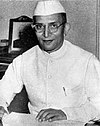
Morarji Desai went on to become the 4th Prime Minister of India after Indira Gandhi’s first term. As the Chief Minister of Bombay state from 1952 to1956 he ordered the partition of Bombay into two different states with respect to their language, presently known as Mumbai and Gujarat. After the 1962 Sino- Indian War it was him who restored normal relations between the two countries. He also played a very important role in the Indian Nuclear Program.
Indira Gandhi (1966-1977, 1980-1984)
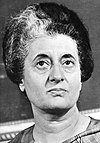
Indira Priyadarshini Gandhi was the 3RD Prime Minister of India. To date she is the only female Prime Minister of India. She served two tenures as the Prime Minister. She held important portfolios in the cabinet such as the Ministry of Finance and Ministry of Home Affairs before becoming the Prime Minister.
She was known for her political intransigence. She declared war with Pakistan in 1971 for the liberation of East Pakistan which was consequently won by India. East Pakistan was liberated and went on to become Bangladesh. Gandhi imposed a state of Emergency for 21 months, suspending basic civil liberties and the press was also censored. However, in 1980 she returned to power after free and fair elections. In 1984 she was assassinated by her own Sikh Bodyguards after she had ordered military actions in Golden Temple. It was named Operation Blue Star.
Gulzarilal Nanda (1964,1966)
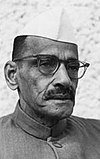
Gulzarilal Nanda became India’s acting Prime Minister twice; for thirteen days each. He was serving as the Home Minister and that was the reason behind him succeeding Pandit Jawaharlal Nehru and Lal Bahadur Shastri.
Second Prime Minister Of India- Lal Bahadur Shastri (1964-1966)
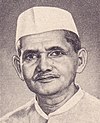
Lal Bahadur Shastri served as the second Prime Minister of India. Under his tenure The White Revolution was promoted. He also initiated The Green Revolution in 1965 which led to the increase in food grain production in Uttar Pradesh, Punjab and Haryana. He raised the slogan “Jai Jawan Jai Kisan” during the Indo- Pakistan War of 1965. This slogan became very popular. After the war formally ended in Tashkent with the Tashkent Agreement on 10th January 1966, he is said to have suffered from a cardiac arrest which apparently proved to be the cause of his death.
First Prime Minister of India- Pandit Jawaharlal Nehru (1947-1964)
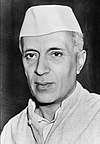
List of Prime Ministers- Frequently Asked Questions. (FAQs)
Q1. Who is the longest serving Prime Minister of India?
Answer- Pandit Jawarharlal Nehru is the longest serving Prime Minister of India.
Q2. Who was the first Prime Minister of India?
Answer- Pandit Jawaharlal Nehru was the first Prime Minister of India.
Q3. Who is the first female Prime Minister of India?
Answer- The first and the only female Prime Minister of India till date is Indira Gandhi.
Q4. Who is the youngest Prime Minister of India?
Answer- Rajiv Gandhi at the age of 40 was sworn in as the youngest Prime Minister of India.
Q5. How many Prime Ministers are there in India?
Answer- India has been served by 14 Prime Ministers, 15 including Gulzarilal Nanda. Visit Justtutors.com for
Also Read:
General Knowledge Questions for Class 8 With Answer
General Knowledge Questions for Class 9 with Answers
General Knowledge Questions for Class 10 with Answers
The post List of Prime Minister in India with Important Facts appeared first on Blogs.
]]>